A mother and daughter on a Rhine River Cruise
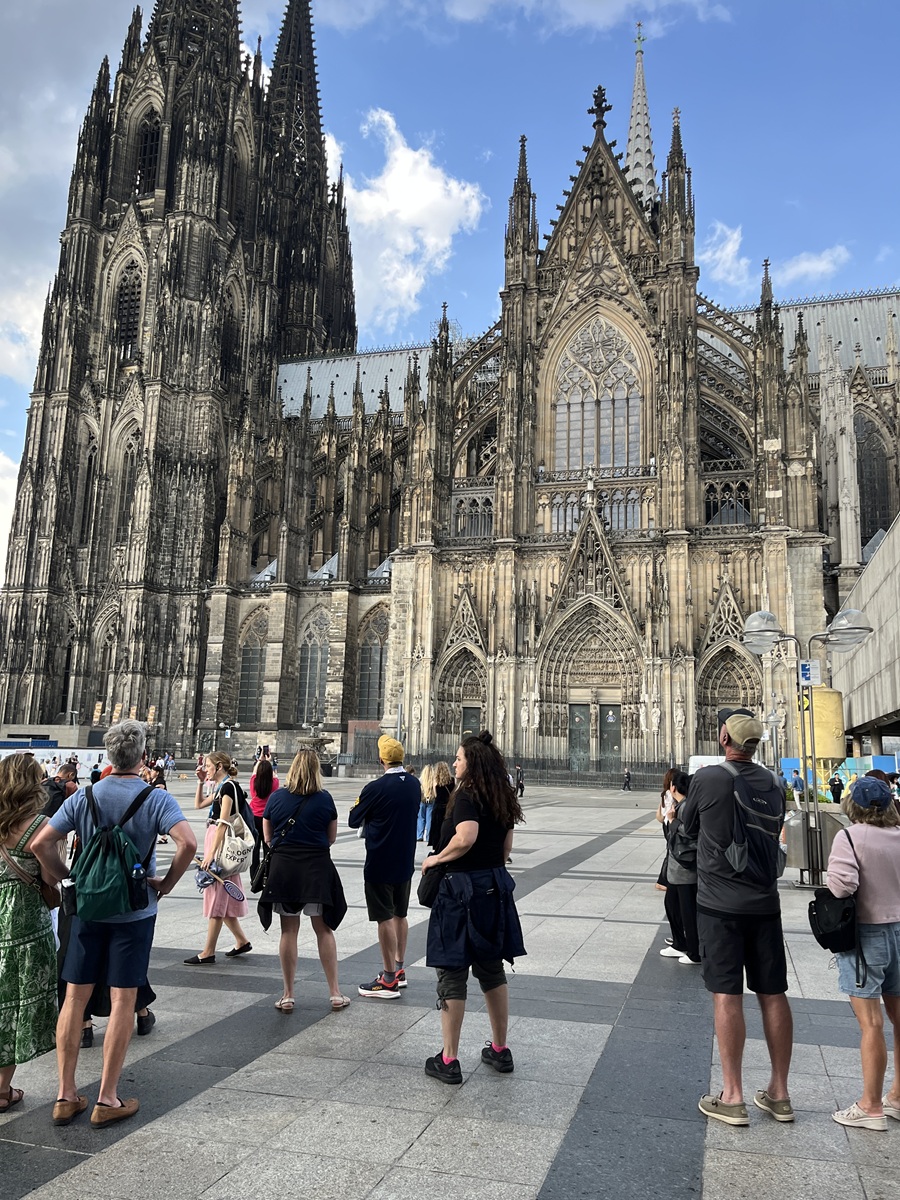
By Eileen Ogintz
When Dr. Patricia Kolesnichenko’s son had a last-minute basketball camp and she had the week off, and her husband had to work, she figured there was no better time to take her 16-year-old daughter Isabella to Europe for a river cruise
She opted for an AmaWaterways cruise on the Rhine largely because “it was all organized for us and it’s a nice pace,” she explained. “And we can be really active.”
Isabella, for her part, the youngest on board (the oldest passengers are in their 80s), doesn’t mind a bit that there are no other teens as she and her mom can explore on their own—a chocolate tasting at a chocolate museum in Cologne, Germany; a food tour in Amsterdam before we left on the cruise; an Uber to the Netherlands town of Zaanse Schans to see the windmills, and a bike ride in Zaandam.
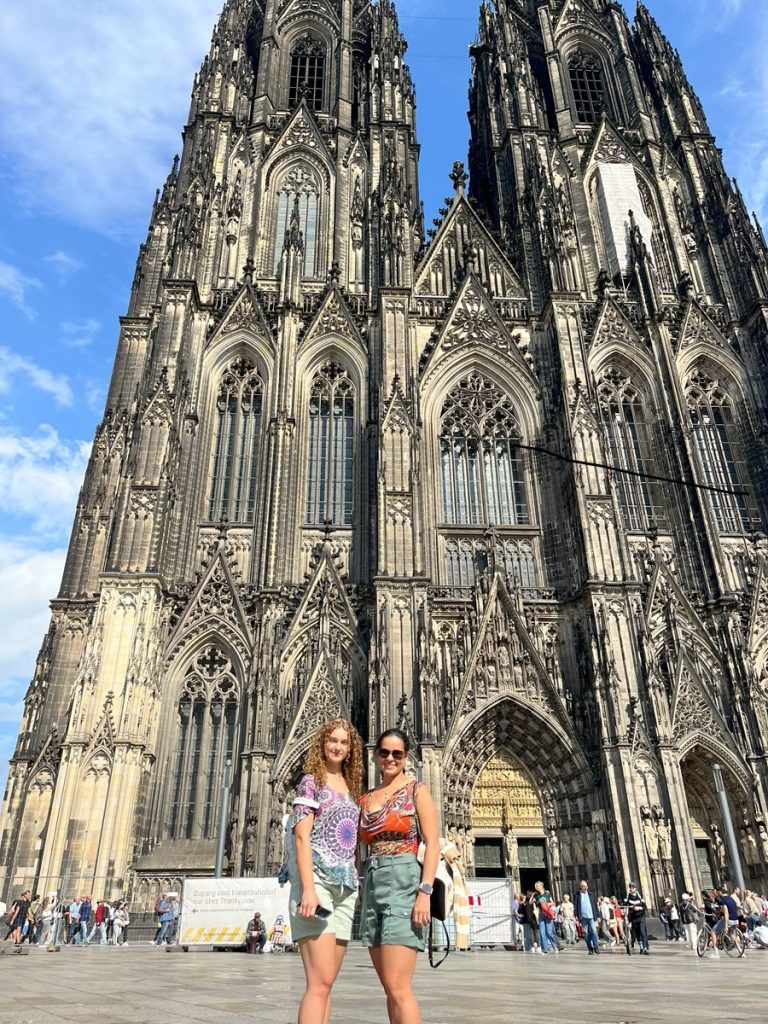
“I like older people, and I like being by myself,” the teen from Ontario Canada opined. The two were relaxing in the lounge where we gather for talks from the always engaging cruise director Rachel Couto Gomes, who is half Dutch and half Spanish and speaks eight languages. When she wanted to explain the different paces of walks in Cologne, for example, she showed penguins—waddling slowly, more quickly, and a junior penguin speed waddling.
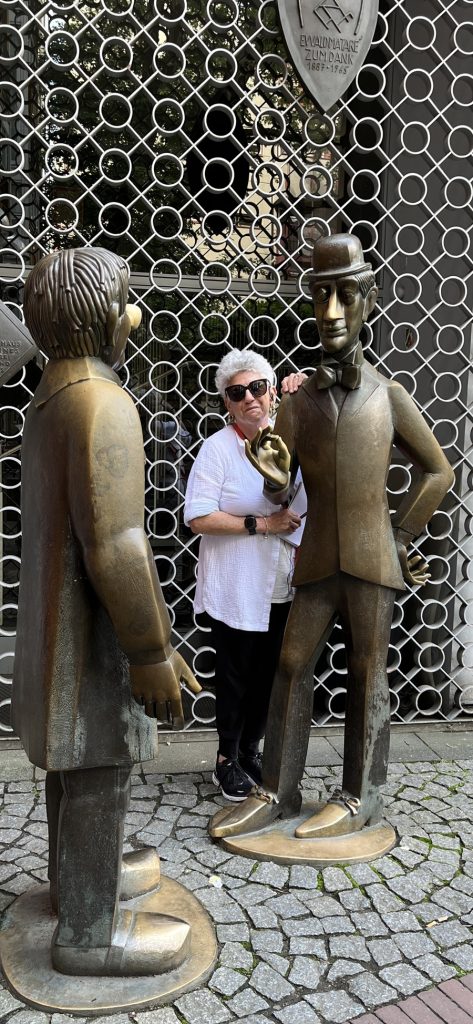
There is always coffee, tea and water here and a fun “sip and sail” hour with cocktail and mocktail of the day – a Cosmopolitan, for example and non-alcoholic hibiscus sangria or a French martini.
I’m impressed that in the dining room local specialties are highlighted. For example, as we are sailing the Rhine River toward Cologne, we can have an appetizer of white sausage and potato cake with apple sauce, German lentil soup, Kaesespatzle (homemade noodles with a cheese sauce and crispy onions and German pork belly, pork knuckles and neck with sauerkraut, pretzel and German roast potatoes with Bavarian cream with blueberries for desert.
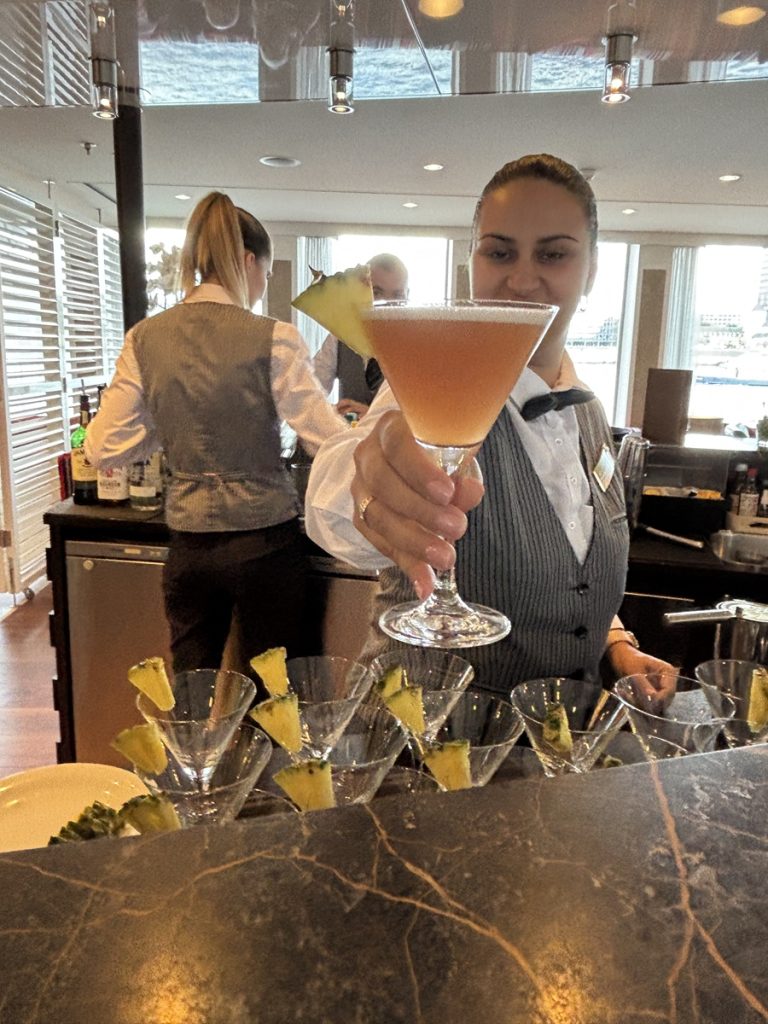
The menu explains that Riebekuchen are German potato pancakes common in many areas of Germany. During the Middle Ages, we also learned that lentils gained prominence as a popular food because they could be easily cultivated and were affordable. Today, there are many regional varieties. It is also impressive that AmaWaterways source their fresh produce, herbs and fish from local farmers, whose families have been farming for generations.
But should you not fancy local dishes, you can always opt for pizza, a burger or Vegetarian options.
There is enough variety “to keep your palate engaged,” said John Joy, sailing with his wife Kathy from San Jose on their fifth cruise with AmaWaterways.
“The staff is phenomenal,” added Kathy Joy.
“The excursions offer lots of options to explore in different ways and to help you understand the local culture,” added Neal Dechene who also has cruised AmaWaterways multiple times with his wife Jane Haley from California.
“They do such a good job,” said John Joy, “Why take a risk with some other company. You know what you can expect. I don’t want to take a risk with my vacation dollar.”
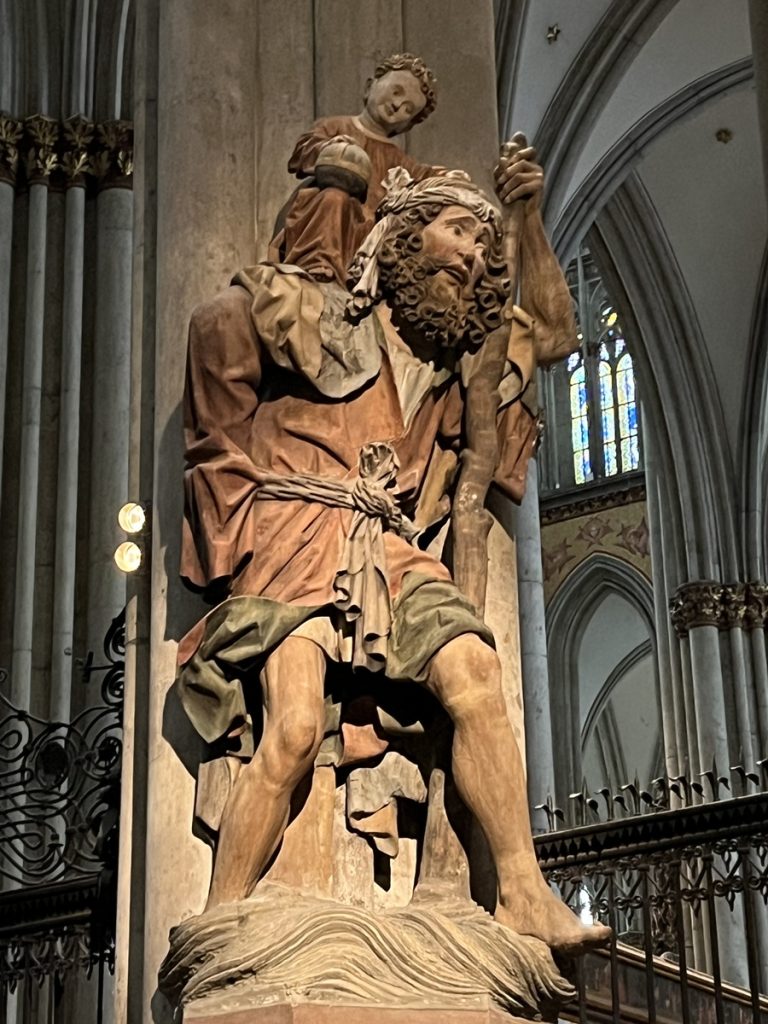
We tour Cologne, Germany, the country’s fourth largest city with 1.2 million people, our engaging young guide Valeria Zubco tells us. So impressive! She speaks five languages and has just finished a masters program here in tourism.
We learn that during WWII, much of the city was destroyed by allied bombing. The famous cathedral, over 600 years in the making, was damaged but not destroyed as the Allied pilots used the 516-foot-tall spires to help identify the targets.
The Cathedral first started in 1248 and still isn’t finished, though there are services in the church. It is the most visited monument in Germany with some 20 0 00 visitors a day.
The windows are fabulous—some dating back to the early 1500s and the newest created in 2007 by artist Gerhard Richter—more than 11,000 handblown colored panes that can reflect the light, representing the tension between the cosmos and chaos.
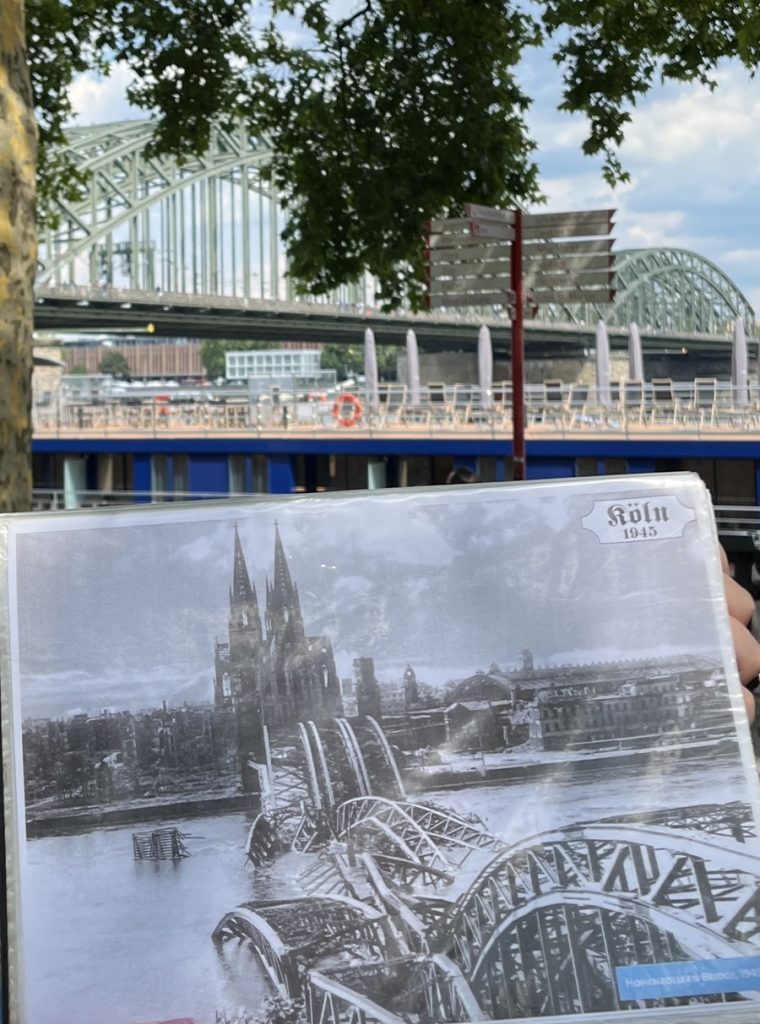
Though the city was largely reduced to rubble during WWII, you wouldn’t know it today as people are biking along the river, kids playing in a splash pad, many eating sausages and fries at outdoor cafes. Every square, our guide tells us, will host a Christmas Market. Many of the buildings have been rebuilt to look like those centuries old.
Fun fact: Eau de Cologne was invented here, now produced by two rival companies. Queen Victoria was a fan. So was Napoleon who carried a small vial in his boot. A small bottle is considered a wonderful souvenir but sadly, the shops are closed.
We admire the statues of Tunnes and Schal, popular figures in puppet shows. Rub one nose for prosperity; the other for happiness…but uh oh, I rub both which means seven years of bad luck.
How to remedy the mistake? Look everyone in the eye when we stop for a local Kolsh beer. Prost!
